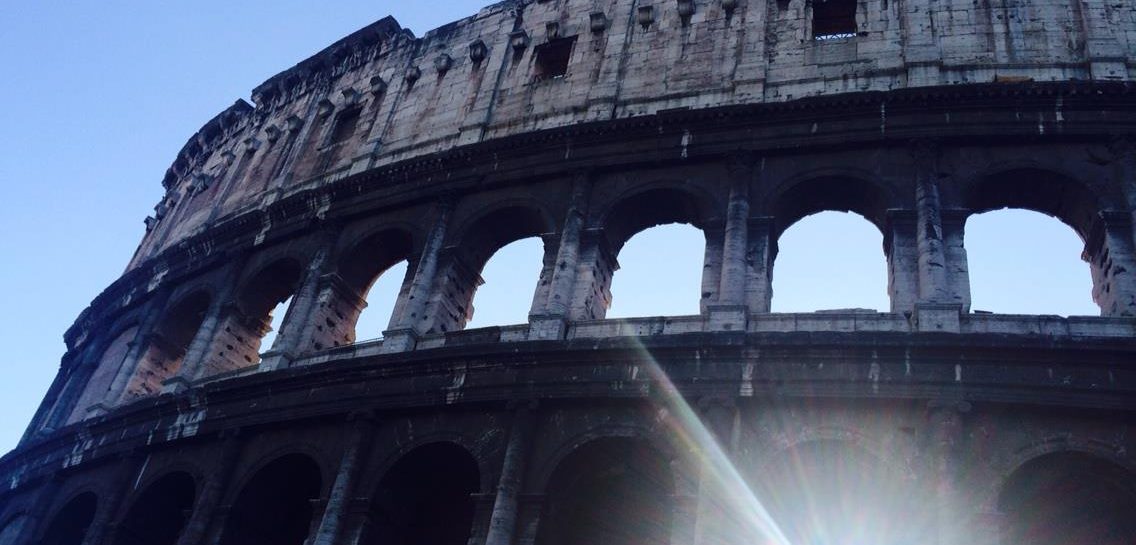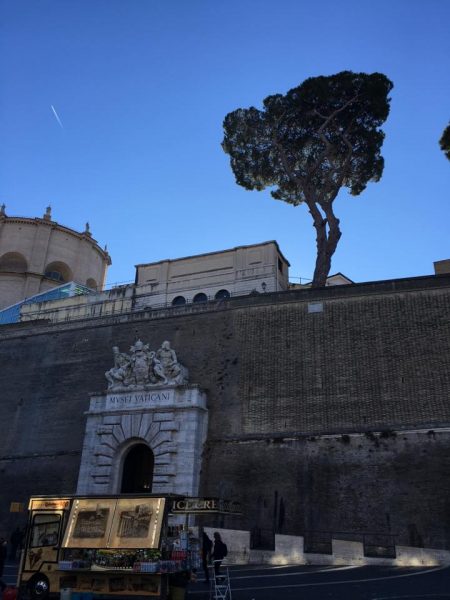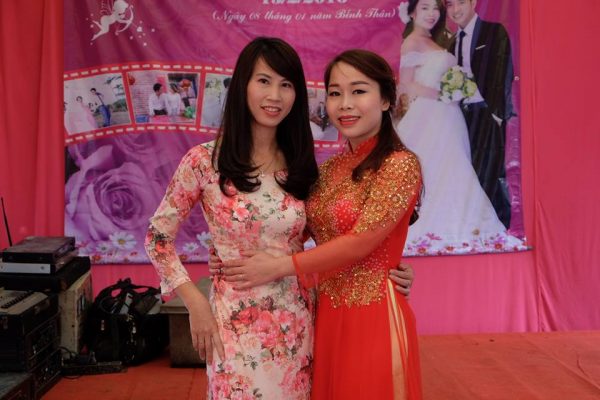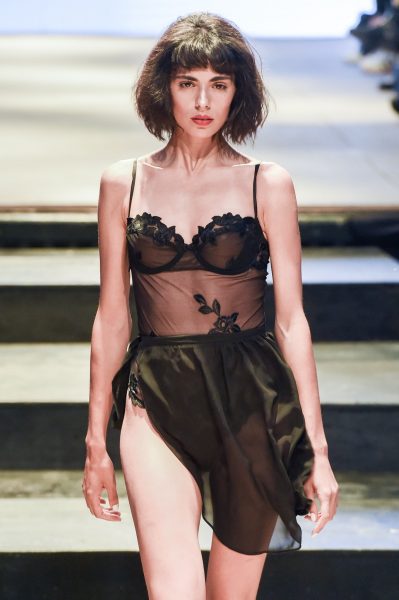
From the series: Cities we love
by Jens Hoffmann

The superstitious can rest easy: The 18th-century bronze sculpture of Rome’s protector, St. Michael the Archangel, is back where it belongs, atop the Castel Sant’ Angelo, after more than two years of restoration.

The effort to preserve Rome’s monuments is herculean and varied, but it seems to follow a certain rhythm. Autumn this year offers a window of opportunity from which to see some recently restored works and to
Rome – bella Italia

The Trevi Fountain, said to ensure, with the toss of a coin, a visitor’s return, is in dire need of repairs and cleaning, which should begin around the end of the year. Another of the city’s most beloved fountains, the little Barcaccia at the foot of the Spanish Steps is now gleaming and fresh after four months’ work. The five-year campaign, begun in 1981, to save some of Rome’s ancient monuments is not entirely on schedule, but a few scaffolds have come down already.
In the Roman Forum, the three elegant columns of the Temple of Vespasian are about to be uncovered along with the Column of Phocas. After years of painstaking work to repair cracks in its huge walls, the Colosseum is relatively strong again. Nearby, the Arch of Constantine no longer looks like a big box wrapped in green cloth. Parts of this monument and of the Arch of Septimius Severus are now in view.
Perhaps the most dramatic restoration project under way in Rome is reaching an exciting stage. In the 12-year effort to clean Michelangelo’s Sistine Chapel frescoes, unexpectedly brilliant colors have emerged from beneath centuries of grime. Perhaps before the end of the year, much of the Genesis section will be visible.

Visitors to the Vatican between Nov. 18 and Dec. 1 should have an unusual opportunity to see Raphael’s Loggia, closed for security reasons when the Pope is in residence.
Pope John Paul is leaving soon for a trip to Asia, and an insistent request at the museum’s front desk should open the Loggia doors. The Old Testament episodes therein present a contrast with the more formal historical and allegorical frescoes in the four Raphael Stanze normally open to the public.

Opening at the Vatican – an exhibition of a rare art form, mosaici minuti, mosaics made with very tiny pieces of stone. The technique flourished from 1775 to 1825, predominantly in Rome. The mosaics were purchased as souvenirs by visitors from all across Europe during this period. Nearly 200 works, large and small, have been collected including important contributions from the Hermitage Museum of Leningrad and the Gilbert Collection of Los Angeles. A tomb discovered in 1857 has been carefully re-created. One of the original frescoes has been restored and remounted and objects from the tomb have been gathered from the major museums of Europe. The excavation is known as the Tomb of Francois of Vulci to honor the archeologist who made the discovery at Vulci. The December opening date has not yet been announced.
At the Palazzo dei Conservatori on the Capitoline Hill, a collection of 74 sculptures by Degas, including figures of ballerinas, horses and female nudes.

Bellissimo.
A collection of more than 150 works by Sir Edward Burne-Jones at the National Gallery of Modern Art until Nov. 23 attempts to show how the Pre-Raphaelite painter developed a modern sensibility late in his career. Autumn Cuisine At harvest time in Italy, the bounty is collected not just from the fields and vineyards but also from the deep, dark woods. A variety of wild plants and animals make their way onto restaurant menus offering an interesting change from the usual fare. The most commonly available of the wild delights are funghi porcini, boletus mushrooms that spring up when brief, drenching rains are followed by warm sunshine. This year, the porcini are widely availab were served in a more ordinary manner. Big porcini are also roasted like slices of meat.
The rarest of forest treats is an exceptional salad made of ovoli mushrooms and white truffles. The ovoli are firm, egg-shaped white mushrooms ususally gathered in the foothills of the Alps. The mushrooms have a delicate flavor that emerges in combination with the truffle shavings and bits of Parmesan cheese. This is defintely a splurge dish that costs about $22. Some people are put off when waiters start recommending dishes, but a dish like an ovoli salad may not appear on the menu even as a plate of the day. The truffles are more widely available and are shaved onto a variety of pasta and meat dishes, imparting a taste like a subtle blend of wood smoke and chocolate.

Tuscan cooking also offers some alternatives to traditional pasta dishes served at the start of a meal. Crostini di Caccia, are bits of toasted bread covered with a rich brown pate made from game.
There are a variety of hearty soups made from fagioli, white haricot beans.
A list of the best Tuscan restaurants in Rome would include Il Buco, centrally located downtown at 8 Via Sant’ Ignazio (telephone: 679-3298).
Specialties of the house include all kinds of game; Pappardelle alla Lepre, broad egg noodles in a sauce made of hare meat, wine and herbs and Spiedini Senese, veal scallops wrapped around cheese and prosciutto and then grilled.
Al Chianti is at 17 Via Ancona, near Porta Pia north of the Via Veneto area (861-083). One sniff inside the door will tell you the place is well-stocked with fragrant white truffles. Numerous game dishes are available in addition to Tuscan classics like Zuppa di Fagioli, a bean soup with a good dose of garlic that can be made piquant by adding olio santo, a rich olive oil alive with fine bits of dried peppers, which the waiter will offer as a condiment. Al Chianti also offers a Bracciola de Cinghiale alla rosmarino, a grilled wild boar chop seasoned with rosemary.
Just off the Piazza di Spagna at 11 Via Borgognona, Nino (678-6752) has a wide array of standard Tuscan dishes, including fried chicken the way it is done in Florence, with a crunchier batter than Southern-style. In addition it offers a notable splurge dish, fagioli and caviar, a remarkable combination priced at $22 that can be divided among two or three people to make a superb antipasto. Nino also boasts excellent Bistecca alla Fiorentina, a big, charcoal-broiled T-bone steak traditionally from cattle bred in one part of Tuscany. A full meal with no great extravagance at any of these restaurants will cost about $30 a person. All three have very good house reds, chianti, of course, and, as a bonus, Il Buco gives all its customers some vino santo and almond cookies at the end of the meal. Shopping As the address for Bulgari and Gucci and other major stores, the Via Condotti has long been the best-known shopping street in Rome. From any point along the street one has an exceptional view up the Spanish Steps to the obelisk at Trinita dei Monti, and there is the Caffe Greco, a coffee bar and pastry shop that has become a great attraction. Just one block south, the Via Borgognona has recently become the shopping street for serious shoppers. Narrow, shaded, and usually uncrowded, the Via Borgognona is lined with many boutiques of the same names that grace Madison Avenue. Laura Biagiotti just opened her first Roman outlet at the end of the street near the Via del Corso. A drab five-and-dime store was transformed into this airy showplace for fine clothes by Piero Pinto, one of Italy’s leading interior designers. The arrival of Biagiotti’s boutique established this street, only four blocks long, as the home for Rome’s, as well as Milan’s, foremost fashion designers. The Fendi sisters have a shop on both sides of the street. Gianfranco Ferre’s and Missoni’s boutiques are there. Valentino and Gianni Versace are just a few steps away on a cross street, Via Bocca di Leone. The selection is attractive.


